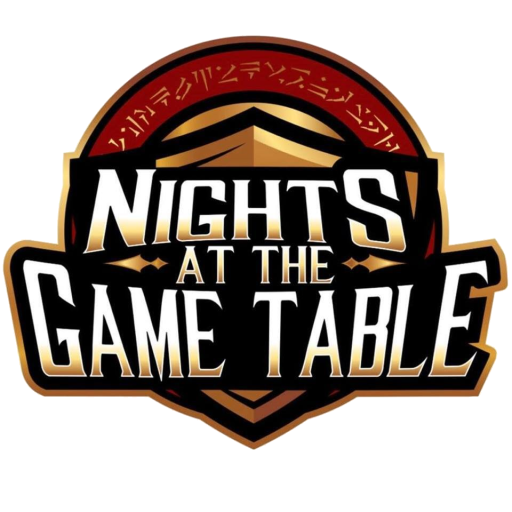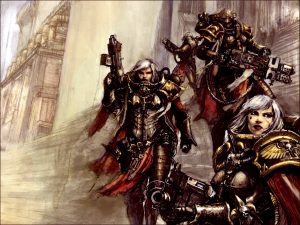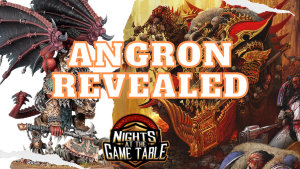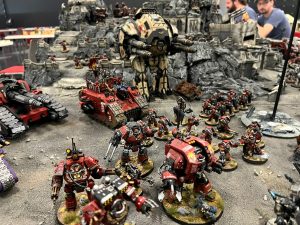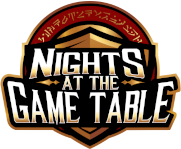In previous articles we’ve touched on the four kinds of gamers as well as the value of passive thinking. This week’s article is third in a series of four, in which we will look to combine these two concepts, play to our strengths and embrace our preferred playstyle.

Specifically, for each playstyle archetype, we are looking at two major pregame steps we can take to help improve our chances of success:
- Build a list that works in our preferred playstyle
- Establish a gameplan or script for how the list will work in various scenarios and matchups
This week we are focusing on the Tank-Commander playstyle. This playstyle is aggressive tight, and fits someone who wants to dictate the pace of the game through careful planning and calculated aggression. Armies that will be best for this player are ones where the big hitters and offensive punch can be kept safe through combinations of positioning, distraction, alternative deployment, range, and durability.

Some list archetypes for this playstyle are, in no particular order:
- Screened Tankline – Multiple efficient and durable shooters screened by chaff units and units with midfield deployment to keep threat at a distance from the shooters.
- MSU – Multiple Small Units – This list style decentralizes its threats to limit the impact of a loss of any one unit, and also allows many units to support one another, dogpiling enemies and overwhelming them from multiple directions
- Transport spam – This playstyle befits a tank commander as it usually provides a lot of mobility and can also make it hazardous for opponent to heedlessly attack in, as the transport occupants often have a way of hitting back, after having been safe in their metal box.
The Tank Commander playstyle is about dictating the pace and positioning of the armies, using careful placement to keep threats nullified while maximizing their own outputs. So let’s look at a list that can be run aggressively while also having the tools to keep our heaviest hitters safe from harm. This time we’ll take Andrew Whittaker’s ATC list, which is solo Blood Angels:
Blood Angels Battalion:
Chaplain: Jump Pack
Chief Librarian Mephiston
5 Scouts: Bolters
2x 5 Tactical Marines
2x Razorback: Twin Heavy Bolter
Blood Angels Vanguard:
The Sanguinor: Warlord
Sanguinary Ancient: Death Mask, Power Fist, Standard of Sacrifice
8 Sanguinary Guard: 3 Power Fists, 5 Encarmine Swords
8 Sanguinary Guard: 5 Encarmine Axes, 1 Encarmine Sword, 2 Power Fists
3x Relic Sicaran Battle Tanks: Two Heavy Bolter Sponsons

This list is designed to use mobility to bring forward, scary close combat threats to bear while protecting the backfield firepower of the Relic Sicarans. All the combat units having access to Fly, along with the Blood Angels redeployment stratagem, means these units can quickly redeploy, feint, and counter-charge as needed, while creating areas of the board where an opponent doesn’t want to just walk into.
With the list taken care of, the second part of the equation is game planning, which starts with deployment. The elements on the board are deployed defensively, while still putting them in positions to contribute offensively. The meat of the firepower is in the Sicarans, and without much of a screen to speak of, splitting them up as far as possible while also keeping them in cover if possible is the goal with their deployment. The scouts can deploy forward or defensively. Mephiston wants to jump into a Razorback deployed forward as it gives him protection and a greater jump-off to begin his aggression.

Lastly, while the rest of the army just about can deep strike, we’re often going to want to put one unit of the Sanguinary Guard on the table, along with the Ancient, in cover. With effectively a 1+ save and an ignore wounds from the Relic banner, the unit is incredibly resilient while also providing a deterrent to anyone looking to push forward. The Chaplain, Sanguinor, and remaining Sanguinary Guard squad are then free to drop in turn 1 or wait until turn 2.

From there, the gameplan becomes largely about bringing all these very dangerous tools to bear quickly and keeping the enemy on the defensive. Mephiston can be both a scalpel and a bludgeon, sent forward to snipe out important units, or just lay down the hurt on something before it can be fully brought to bear. The Sanguinary Guard and Sanguinor look to keep the pressure on and punish anything that ventures forward, keeping the pressure on and the opponent back while the Sicarans put down a ton of -1 AP shots.
The combat aggression, plus the use of the Blood Angels stratagems for redeployment, movement, and for hitting even harder, will provide space for the Troop units to take the midfield and hunker down, winning the mission while the enemy is forced to deal with the potent threats that require immediate attention.
With this broad stroke of a gameplan in place, it comes down to practice and learning the timing. This list can be incredibly effective, but also has little room for error. It also has little backup and many of the elements need to be delivering on their potential as quickly as possible.
The specifics we want to practice are:
- Stratagem control: With a limited resource of Command Points and a lot of good stratagems to choose from, to master this list we need to fully understand each of the stratagems we can bring to bear, and when each is needed, and when they should be skipped.
- Drop and Assault Timings: The elite units cannot be thrown away frivolously. On the other hand, they cannot be held back too long or they miss their window of opportunity to deliver on their potential and continue to dictate the pace of the game. A point of focus in practice should be understanding where we can afford to expose the Sanguinary Guard, and where we would just be throwing them away for little return. So with this, we need to get the timings down to coordinate the assaults and keep pressure up without leaving elements unsupported.
- Target priority: This army punches hard and has decent durability on a unit by unit level, but there aren’t very many of them, so wasting the shooting or combat of even one unit for one turn against a target that isn’t ideal can severely reduce this army’s potential over the course of the game. As such, understanding what kinds of units are best targeted by the Sicarans’ shooting or the Sanguinary Guard’s combat will allow us the greatest success in piloting this list.
With that, we have the rough outline for piloting an aggressive-tight Blood Angels list. The elite nature of the list makes it somewhat unforgiving, but it also means each of the tools can and will hit very hard and reward proper application by a wily general.

Next week we will close this four part series with the Archon playstyle, looking at a reactive-tight list and approach to planning a game.
